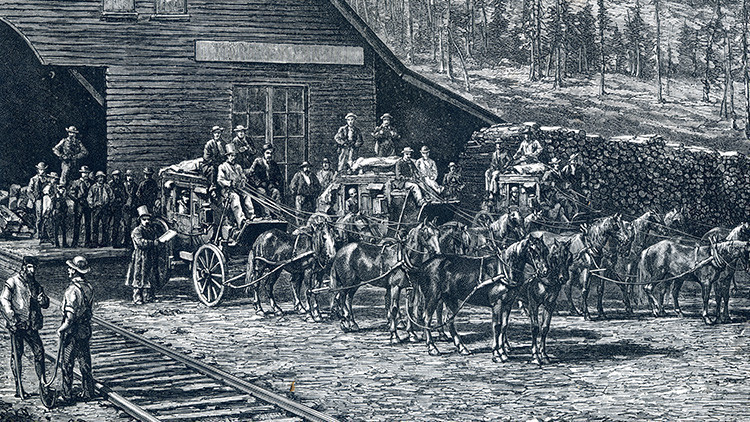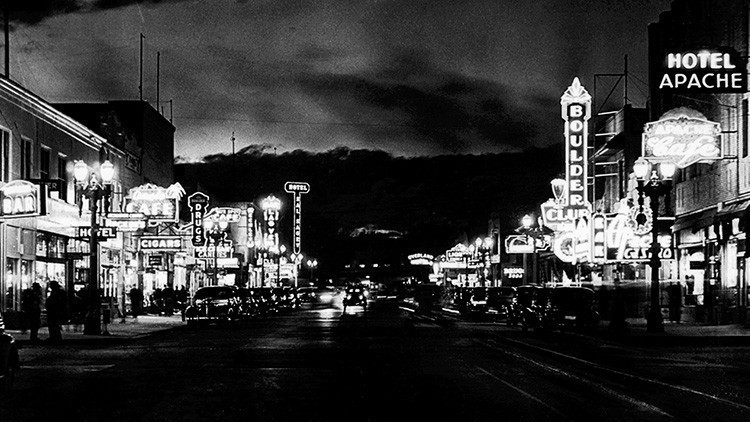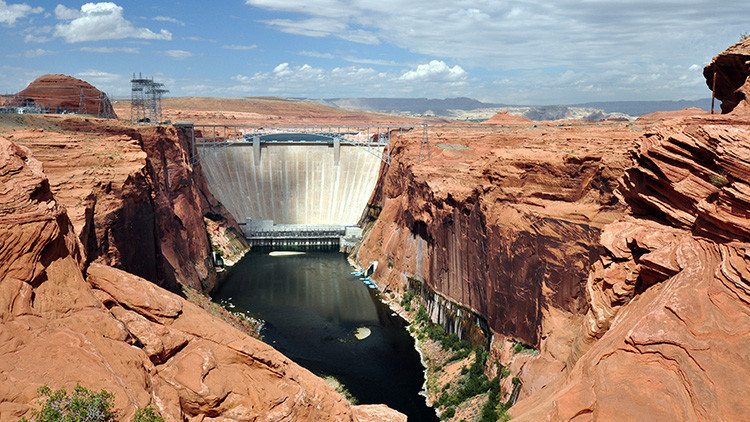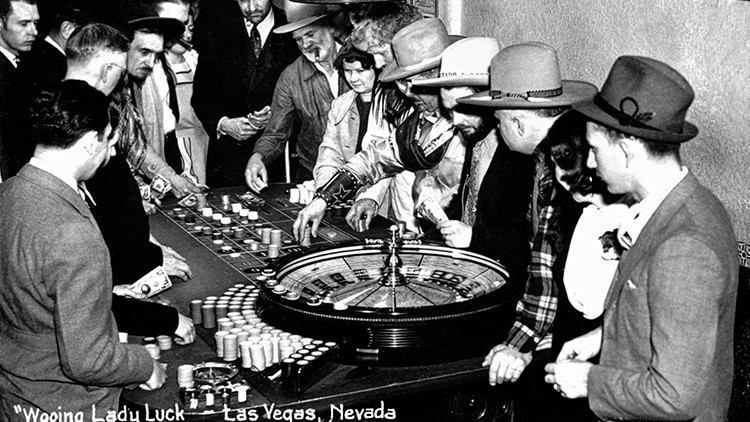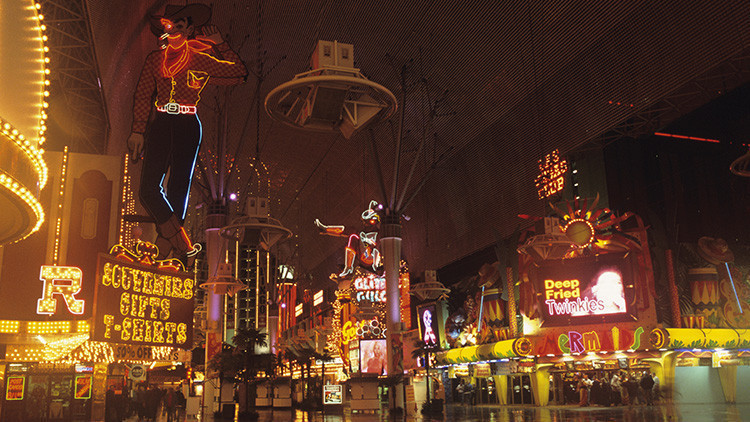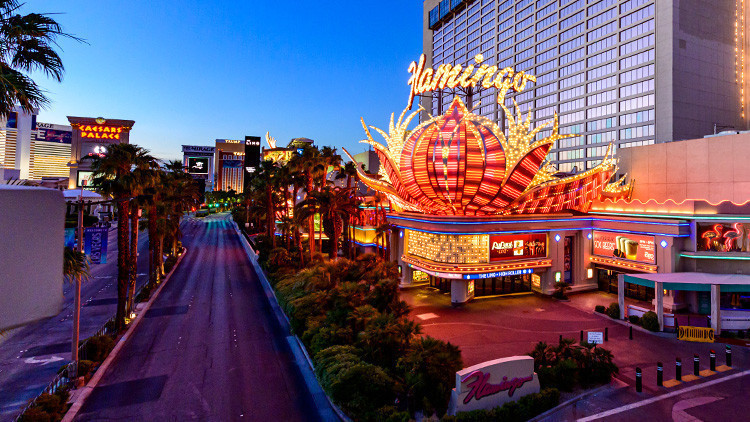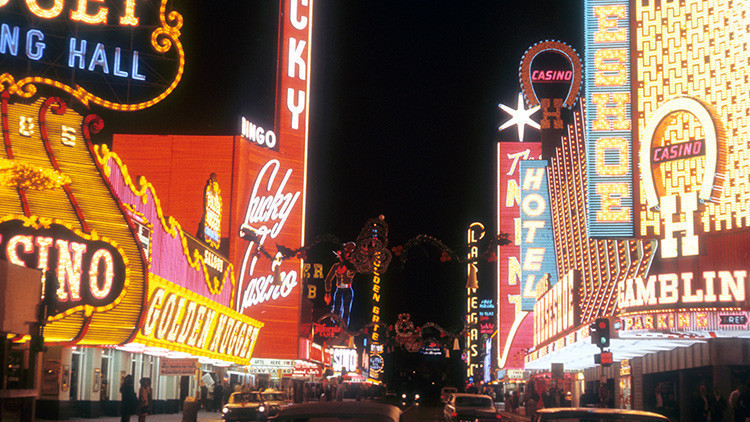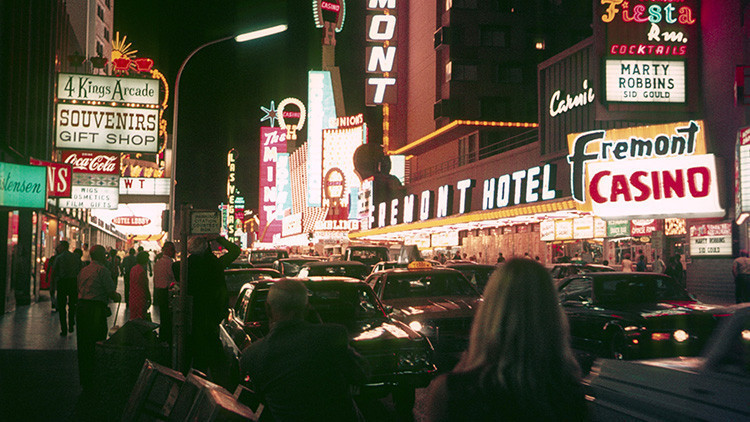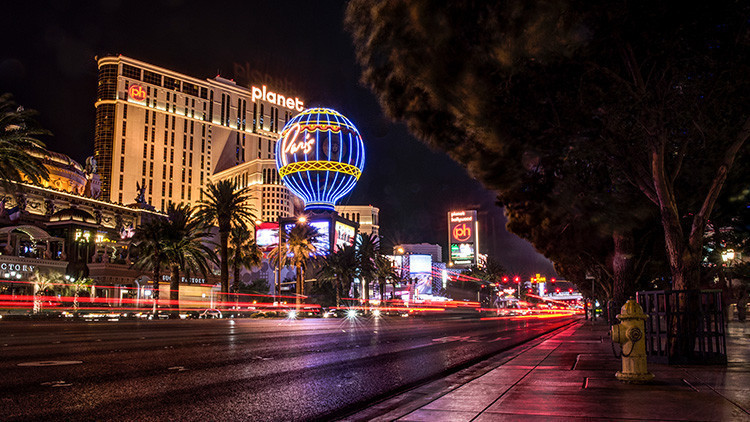Las Vegas History: A Complete Guide
Las Vegas History: A Complete Guide to the History of Las Vegas
When you think of Las Vegas, what comes to mind? Gambling? Bright lights? Sin City? And the crazy things to do in Las Vegas! All of those are accurate descriptors for America's most famous city, but they only scratch the surface. Las Vegas is steeped in history, and there's much more to it than just casinos and showgirls. From its early days as a desert oasis to its transformation into a global tourist destination, Las Vegas has come a long way as the Entertainment Capital of the World.
In this complete guide to the history of Las Vegas, we'll explore the many interesting aspects that have made it the city it is today. So sit back, put on your ten-gallon hat, and enjoy this trip down memory lane! Whether you’re going to Vegas alone or with family, knowing the city's history will help you appreciate all that it has to offer.
What is the history of Las Vegas Nevada?
There were many extreme things Las Vegas offered back then. The first known people to live in the area that is now Las Vegas were the Southern Paiute, who arrived around 300 CE. These Native Americans were hunter-gatherers who made their homes in the canyons and mountains. They were excellent weavers and basket makers, hunted game, and gathered plants for food.
Considering Nevada's arid climate, it's no surprise that water was a precious commodity to the Southern Paiute. The Southern Paiute believed in a variety of other spirits who resided in the natural world, such as the coyote. They lived in relative peace for centuries, but that all changed when the first Europeans arrived in the area.
RELATED ARTICLES
45 Things to Do in Las Vegas This Weekend
The 10 Best Karaoke Places in Las Vegas!
10 Free Attractions In Las Vegas To Keep You On Budget!
The 1800s: Arrival of the Europeans
The first European to set foot in present-day Nevada were Spanish merchants traveling the road to Los Angeles. They named the area "Las Vegas," which means "the meadows" in Spanish. The route stretched all the way from Salt Lake City to California, and these merchants stopped in Nevada to rest and resupply.
At that time, Las Vegas was still a part of Mexico. But after a short-lived war with Mexico, the United States annexed Nevada in 1835. However, the land was still largely unsettled, and it wasn't until the 1850s that American settlers began to arrive in earnest. These pioneers were mostly Mormon missionaries sent to convert the Native Americans living in the area.
Specifically, William Bringhurst and 30 Mormon missionaries settled in present-day Downtown Las Vegas in 1855. They built a fort for protection, the remains of which can still be seen today at the Old Las Vegas Mormon Fort State Historic Park. However, the missionaries faced many difficulties, including water shortage, extreme heat, and internal conflict.
After their hasty departure back to cooler Utah, the area was left mostly uninhabited until the arrival of the U.S Army in 1864.
The 1860s: Arrival of the U.S Army
The U.S Army arrived in present-day Las Vegas in 1864 as part of an effort to protect settlers traveling on the newly built Pacific Railroad from the Confederate Army. They renamed the Mormon fort "Fort Baker" and used it as a base of operations. The soldiers also built a nearby adobe ranch house, which is now one of the oldest buildings in Las Vegas history.
The Army's presence brought much-needed stability to the area, and more settlers began trickling in. One of these was Octavius Gass, a businessman and politician tasked with occupying the abandoned fort. Gass built a large ranch house in what is now downtown Las Vegas and became one of the area's most successful entrepreneurs.
Gass was also instrumental in constructing the Los Angeles & Salt Lake Railroad, which ran through Las Vegas and connected it to the rest of the country. The railroad brought even more people and business to Las Vegas, solidifying its status as a burgeoning town. Farmers began growing crops such as alfalfa, wheat, and cotton when they arrived in the area.
The Birth of Las Vegas (1905-1929)
The completion of the railroad made Las Vegas an essential stop for travelers, and the town began to grow rapidly. There was now a steady water supply thanks to the construction of wells and an irrigation system, as more and more businesses developed.
U.S senators Thomas Kern and William Clark were two of the most critical figures in Las Vegas' early history. Clark began developing another railroad, eventually leading to the auctioning off of the land in what is now the downtown area. The city was incorporated in 1911, with Peter Buol serving as its first mayor.
Following other Western states, Nevada was forced to outlaw gambling. However, Las Vegas' economy was still booming due to the construction of the Hoover Dam, which created nearby Lake Mead.
Hoover Dam
In 1931, the construction of the Hoover Dam began. It was one of the largest engineering projects in U.S history, and it put Las Vegas on the map as a destination for tourists and workers alike. The small town of 5,000 grew to 25,000 by the time the dam was completed in 1935. Since most of these newcomers were single working men, the city became known for its many brothels and gambling establishments.
As the dam workers finished up their project, another group of workers arrived in Las Vegas: the Mafia. These organized crime bosses saw the potential for profit in the rapidly growing city. They set up bootleg casinos and other businesses, using them as a front for their illegal activities. The Mafia's presence in Las Vegas would continue for many years to come.
Boulder city, named after Hoover Dam's initial name, was created to house the workers. It was a dry city with strict laws prohibiting gambling and alcohol. Many of the dam workers would sneak into Las Vegas on their days off to partake in the vice-filled activities forbidden in Boulder City.
Legalization of gambling
Remember that this occurred during Prohibition, so illegal alcohol flowed freely in Las Vegas. This only added to the city's reputation as a sinful place. Seeing how much money was left on the table from gambling, the state of Nevada decided to legalize it in 1931. But only in certain areas and under strict conditions. This was a turning point in Las Vegas history, as it would begin its ascension to earn the title of the gambling capital of the world.
For an establishment to offer gambling, it had to obtain a special license from the state. These were hard to come by, and as a result, there were only a handful of casinos in Las Vegas at this time. Most were located on Freemont Street, later known as Glitter Gulch due to all the bright lights.
These bright lights came from the electricity generated by the Hoover Dam. This made Las Vegas one of the few cities in the country that was lit up at night. It was a sight to behold and drew even more people to the city.
The legalization of gambling led to an influx in the construction industry as new casinos and hotels were built to accommodate the increasing number of tourists and residents. The Federal Government still wasn't fond of its dam workers gambling and carousing in Las Vegas, so they restricted their movements. New "hidden roads" were constructed to allow the workers to get to Las Vegas without being seen.
These same smuggling routes would also be used by the Mafia to transport liquor during Prohibition. The growth of the city continued unabated.
The Golden Age of Las Vegas (1930-1960)
The 1930s were a booming time for Las Vegas. More and more hotels and casinos were being built, and the city began to establish itself as a destination for entertainment and gambling. Stars like Frank Sinatra, Liberace, and Sammy Davis Jr. performed in the city's showrooms, and people from all over the world came to try their luck at the casino tables.
They became known as the "Rat Pack," and their performances helped to cement Las Vegas' reputation as the entertainment capital of the world.
Mobsters were also celebrities in Las Vegas during this time. Men like Bugsy Siegel and Meyer Lansky were household names, and their casinos were some of the most popular in the city. Jewish Mobster Siegle opened the Flamingo Hotel in 1946, quickly becoming a hotspot for the Hollywood elite.
During WWII, Las Vegas was a training ground for soldiers headed to the Pacific Theater. After the war, many of these soldiers decided to stay in Las Vegas and make it their home. This led to another increase in the city's population.
Prostitution was also rampant during Las Vegas' history. While it was technically legal for a while, it was eventually criminalized by the Government. They shut down the Red Light District, also known as Block 16. This did little to stop illicit activity, and it continued to be a part of Las Vegas culture for many years.
History of Las Vegas Strip
When Thomas Hull built 'El Rancho Vegas' in 1941, he set the standard for the modern Las Vegas hotel-casino. The establishment was among the first to offer air conditioning, a swimming pool, and a showroom. The hotel was also famous for its gourmet food and star-studded entertainment.
But El Rancho Vegas was more than just a hotel; it was also the birthplace of the Las Vegas Strip. The Las Vegas Strip is a 4.2-mile stretch of road that goes through the city. It is home to some of the world's most famous hotels and casinos, now including the Flamingo, Caesars Palace, and the Bellagio.
The Las Vegas Strip was originally just a two-lane road. But as more and more people came to visit the city, it was expanded to accommodate all the traffic. In 1955, a legendary hotel-casino on the Las Vegas Strip opened its doors. The Sahara (which is still open today) was a luxurious establishment that featured an African theme. It was the start of a new era in Las Vegas history.
Post-war Las Vegas (1950-1960)
The 1950s and 1960s were a booming time for Las Vegas. The city's population exploded, and the number of hotels and casinos grew rapidly. Siegel set a precedent for luxury hotels on the Las Vegas Strip, and other developers followed suit. The Sands, Riviera, Fremont, and Tropicana were all built during this time.
The Bank of Las Vegas also joined the party. It was a huge coup for the city, as it was the first time a major bank had lent money to a gambling establishment. This made it possible for casinos to get the funding they needed to build even more lavish hotels and casinos. Jimmy Hoffa, the president of the Teamsters, also invested in Las Vegas during this time.
The remodel attracted movie stars, musicians, and other celebrities to Las Vegas. The Rat Pack often performed in the city's showrooms, along with other prime acts like Barbra Streisand and Dean Martin. This only added to Las Vegas history's reputation for fun and excitement.
The Mafia still had a strong presence in Las Vegas during this time. They were involved in many of the city's casinos and hotels. But as the decade came to a close, the FBI began cracking down on its operations. This operation led to a decline in their power and influence.
Unrelated, atomic testing also took place outside Las Vegas during this time. From 1951 to 1962, the U.S. government conducted 100 tests in the area. These tests were a source of contention for many years, resulting in radioactive fallout that blanketed the city. In fact, mushroom clouds from the tests were often visible from the Las Vegas Strip.
Despite the controversy, the tests were a tourist attraction for many years. People would come to see the explosions, and some even stayed in hotels that had a view of the test site. They also created more jobs in the city.
1960-1980: Modernization
While not quite as booming as the previous two decades, the 1960s and 1970s were still a period of growth for Las Vegas history. More famous tourists and entertainers visited the city, including. Big names like The Beatles and local favorite Elvis Presley.
Elvis even recorded an album, 'Viva Las Vegas,' which helped to solidify the city's reputation as a place of fun and excitement. All of which you can learn about at Westgate Las Vegas Resort & Casino. His residency there drew massive crowds and showcased his talents to new audiences.
The Rat Pack continued to be a major draw for visitors, and they helped to make Las Vegas the entertainment capital of the world. They also helped pioneer the desegregation of the city's hotels and casinos. Prior to their arrival, African Americans were not allowed to stay in most white-owned Las Vegas hotels. Sammy Davis Jr. was the first black member of the Rat Pack and famously stayed in many hotels. His presence helped to break down racial barriers in the city.
While Las Vegas was growing and changing, so was the rest of the world. The 1970s saw the end of the Vietnam War, as well as the Watergate scandal. These events had a major impact on the United States and led to a recession. The economy slowed down, and Las Vegas was hit hard. Tourist numbers declined, and many casinos went bankrupt.
1980-2000: The Revival
That all changed in the 1980s when a new generation of entrepreneurs arrived on the scene. The 'Megaresort' was born, and Las Vegas began to regain its reputation as a premier destination. Steve Wynn, Sheldon Adelson, and Kirk Kerkorian were all instrumental in this revival. These new hotels were bigger and better than before and helped put Las Vegas back on the map.
The 1990s were a decade of growth for Las Vegas. The city's population doubled during this time, and the number of visitors also increased. This was partly due to the growing popularity of luxury resorts and the city's growing reputation as a convention destination.
The 1990s also saw the rise of 'theme' hotels, which sought to immerse visitors in a particular experience. Famous hotels like the MGM Grand, Bellagio, and Planet Hollywood all opened during this decade. They were an instant hit with tourists and shaped the city's skyline into the Vegas we know and love today.
2000-Present: The Modern Era
The new millennium brought even more change to Las Vegas. The city underwent a major construction boom, and new hotels, restaurants, and attractions were all over the place. With the mobsters out of the way, Vegas was now a safe and family-friendly destination.
While some might argue that Las Vegas lost its charm in the 2000s, there's no denying that the city is still a major force in the world of entertainment. From lavish shows and world-renowned chefs to extreme things Las Vegas locals enjoy and iconic landmarks, you never have to wonder what to do in Vegas during the day – or night.
New complexes like Palazzo and The Cosmopolitan have brought a touch of class to the Strip, while places like the High Roller and Stratosphere Tower offer breathtaking views of the city. There's also no shortage of things to do off the Strip, from exploring the Hoover Dam to visiting Red Rock Canyon.
And who knows what the future will bring? With new technologies and an ever-changing landscape, Las Vegas history is sure to continue evolving. We can't wait to see what the next decade has in store for this vibrant city!
RELATED ARTICLE:
At Westgate Resorts, when you Check-In, there’s a LOT to Check-Out! Your Las Vegas vacation awaits! Explore our Las Vegas resorts today or talk with a vacation planner at 888-852-2959 or 407-355-2690.
* Westgate Resorts is in no way affiliated with the attractions featured in this article. Items or places listed are current as of the publishing date of this article. Please call or visit the respective website for the most up-to-date offerings and details.
When You Check-in, There's a Lot to Check Out
Sign up for our newsletter and check-in to great offers, secret stuff, and special events.

